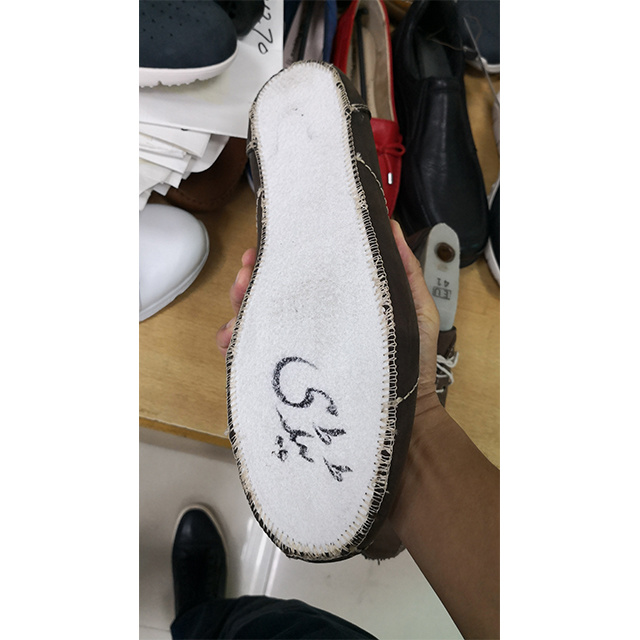Technical implementation of breathable insoles
Published Time:
2022-08-18
Source:
Author:
Shoes are made using various materials to wrap the foot, preventing the flow of bacteria inside the shoe and avoiding stuffiness and discomfort. With the advancement of times and improvement in living standards, the demand for breathability in shoes has also increased. Several breathable insoles have appeared on the market, but these insoles generally have complex structures and large thicknesses. Installing such insoles on the soles can cause the soles to detach. Let's explore the technical implementation methods of breathable insoles!

Technical Implementation Elements of Breathable Insoles:
To overcome the shortcomings of existing technologies, this invention provides a lightweight, breathable insole characterized by its light structure and good ventilation performance.
The technical means of breathable insoles are further improved. The air guiding layer includes an air guiding plate connected to a non-airtight pad at the front end. Air guiding grooves that are recessed inward are set on the air guiding plate. The air guiding layer is formed by connecting the pad and the air guiding plate. The air guiding plate, or air guider, includes an air guiding plate connected to a breathable insole surface at the upper end. An upper plate is also provided between the air guiding plate and the insole surface. Air guiding grooves with concave recesses are provided on the air guiding plate. The air guiding grooves and the upper plate, or air guider, include an air guiding plate connected to the insole surface at the upper end. An upper plate is also provided between the air guiding plate and the insole surface. Air guiding grooves with concave recesses are provided on the air guiding plate. The air guiding grooves and the upper plate. The ventilation holes are set at the positions of the corresponding air guiding grooves on the upper plate and the insole surface. The ventilation holes are formed by connecting holes set on the upper plate and the insole surface respectively.
The breathable insole includes: an air guiding plate, with a gas guiding plate installed at the upper end, and a breathable insole surface installed at the upper end; multiple support columns with gaps between them are installed between the air guiding plate and the upper plate, and the gaps between the support columns form gas guiding passages; or, a gas guider is provided, with an upper plate installed at the upper end of the gas guider, and an insole surface installed at the upper end of the upper plate. Multiple support columns with gaps between them are installed between the gas guider and the upper plate, and the gaps between the support columns form gas guiding passages. Ventilation holes are provided at the positions of the corresponding gas guiding passages on the upper plate and the breathable insole surface. The ventilation holes are formed by connecting holes set on the upper plate and the insole surface respectively.
The elastic clamping core layer includes multiple connecting columns with gaps between them, connecting the upper and lower ends of the compression intermediate layer. The connecting columns are made of elastic material, and the gaps between the connecting columns form the compression chamber; or, the elastic clamping core layer contains homopolar magnetic materials respectively set at the upper and lower ends of the compression clamping layer, and the space at the upper and lower ends inside the compression clamping layer forms the compression chamber; or, the elastic clamping core layer includes open-cell elastic foam plastic set in the compression clamping layer, and the mutually connected pores inside the open-cell elastic foam plastic form the compression chamber.
The above is an introduction to the technical implementation methods of breathable insoles. For more information, please feel free to contact us!
Breathable insoles
Related Blog







